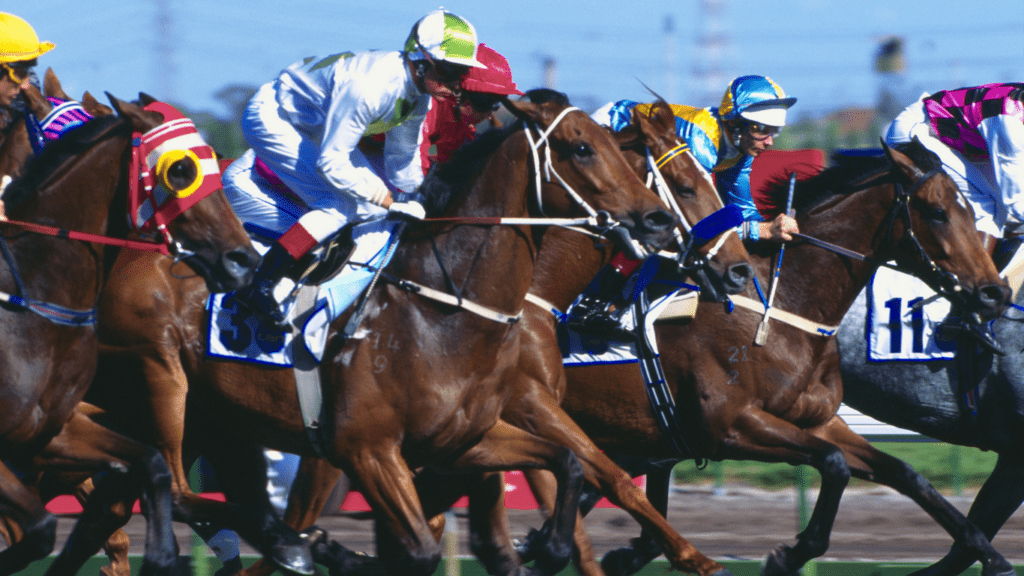Understanding the Basics of a Racing Form
Reading a racing form efficiently serves as the cornerstone for placing smarter bets. Comprehending its key sections and statistics can significantly improve my betting strategy.
Key Sections Explained
- Header Information: This top section contains details like race date, track name, surface type, and race conditions. Knowing these helps me assess external factors affecting horse performance.
- Horse’s Line: Displays each horse’s name, post position, and morning line odds. Recognizing these benchmarks allows me to gauge initial betting interest and horse placement.
- Past Performances: Entries show a horse’s recent races including date, track, finish position, and speed figures. Analyzing these helps me understand trends in form and expected performance.
- Jockey and Trainer Details: Lists jockeys and trainers with their win percentages. This information guides me in determining the expertise and winning consistency of the team.
- Pedigree Information: Highlights the horse’s lineage. Familiarity with successful bloodlines aids in predicting performance on particular surfaces or distances.
- Speed Figures: Reflect a horse’s racing speed, adjusted for track difficulty. Analyzing these informs my decisions on which contenders show optimal racing capability.
- Class Ratings: Indicates the level of competition in past races. Betting on a horse proficient in higher-class races offers strategic value.
- Track Bias Records: Details how certain tracks favor particular running styles. This assists me in predicting which horses might have a home-field advantage.
- Workout Reports: Recent training session times suggest a horse’s workout regimens and current fitness. Tracking this intervenes in my understanding of race-day performance prospects.
Analyzing Past Performance
Examining a horse’s past performance is crucial for making informed bets. Understanding how to interpret race history and evaluate speed figures provides deeper insights into potential outcomes.
Reading Race History
I often start with a horse’s race history to assess its consistency and adaptability. Each entry in the past performance section includes details like:
- race date
- track location
- position finished
- distance covered
By examining these elements, I determine the horse’s performance trends and strengths. For example, a horse consistently finishing among the top three often indicates reliability. Additionally, noting whether the horse prefers certain distances or track conditions contributes to my betting strategy.
Evaluating Speed Figures
Speed figures quantify how fast a horse ran in previous races, adjusted for track difficulty. These figures appear as numeric values next to race results, allowing me to compare performances efficiently. A higher speed figure suggests better performance, so I look for patterns of improvement or decline. If a horse shows a trajectory of increasing speed figures, it often signifies growing competitiveness. By focusing on these details, I gain a clearer picture of which horses might excel in the upcoming race.
Assessing Horses and Jockeys

Understanding both horses and jockeys is crucial for making informed bets. Assessing their conditions and backgrounds helps predict performance.
Horse Condition and Training
Analyzing a horse’s condition involves looking at recent workouts and medical history. Workouts appear as recorded times for specific distances. For example, a strong four-furlong time might indicate readiness. Medical notes highlight issues like recent lameness or surgery, which could impact performance. Trainers often focus on targeted conditioning exercises to optimize horse fit for specific races.
Jockey Statistics
Jockey statistics reveal their current form and historical success rate. Win percentages, especially at specific tracks or with particular horses, serve as key indicators. A jockey boasting a 20% win rate consistently emerges as a potential asset. Position preferences show which distances or track types they excel in. Analyzing recent race results offers insights into their competency and adaptability, which assist in assessing potential outcomes in upcoming races.
Interpreting Track Conditions
Track conditions hold significant sway over race outcomes and betting decisions. With the right interpretation, I can enhance my strategic approach and increase the likelihood of more successful bets.
Weather Impact
Weather directly affects track conditions, impacting a horse’s performance. Rain often leads to a “sloppy” or “off” track, challenging horses that prefer firm surfaces. On dry days, tracks are typically categorized as “fast,” favoring speed. I check weather forecasts before race day to anticipate track conditions, allowing me to adjust my betting strategy accordingly.
Track Bias Considerations
Track bias refers to conditions that consistently favor specific running styles or positions. Some tracks may favor front-runners, while others suit horses that come from behind. By analyzing past race results, I identify if a particular track consistently benefits certain styles. This insight helps optimize my bets by matching the horses’ racing styles with track conditions.
Developing Smarter Betting Strategies
Mastering racing forms equips bettors with strategic insights, but coupling this knowledge with specific betting strategies maximizes potential gains.
Identifying Value Bets
Identifying value bets requires understanding odds and probability. By determining if the odds offered by bookmakers underestimate a horse’s actual chances, I can spot valuable opportunities. For instance, if a horse shows consistent top finishes and the odds imply a lower likelihood of winning, this might be a value bet. Analyzing speed figures, track bias, and recent performances aids in assessing true potential versus public perception.
Managing Your Bankroll
Effective bankroll management ensures long-term betting success. I allocate a specific portion of my bankroll for each bet, maintaining consistency regardless of temptation to increase stakes on seemingly certain wins. Typically, I use a flat betting strategy, wagering 1-2% of my total bankroll per bet. This disciplined approach helps mitigate risks and preserves capital during losing streaks, ensuring I stay in the game for profitable opportunities.



